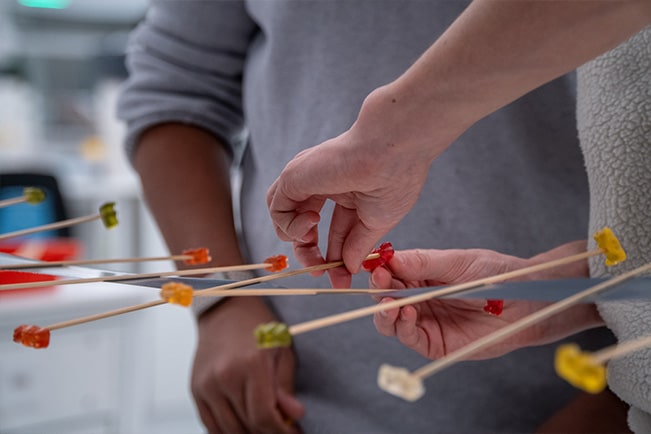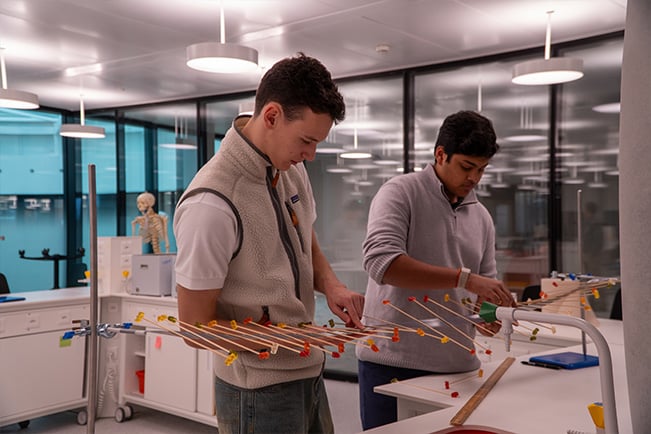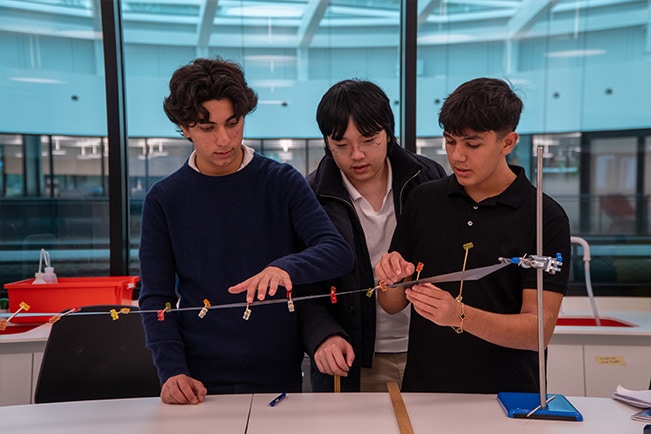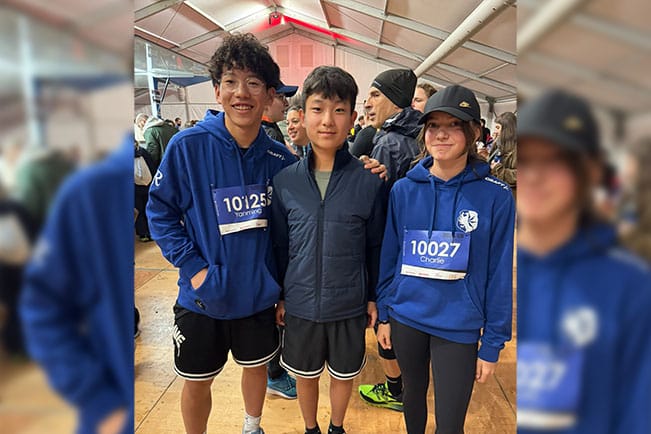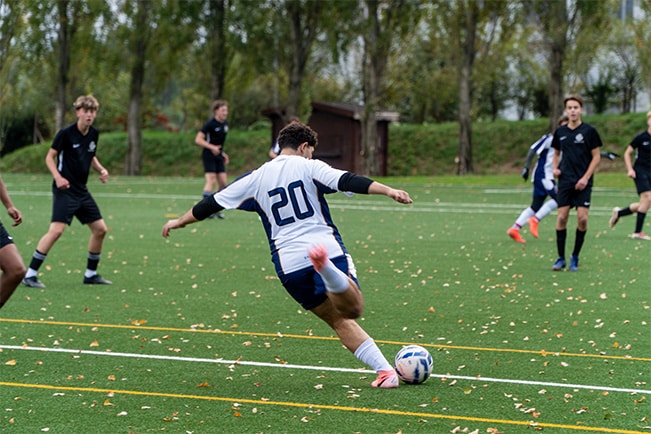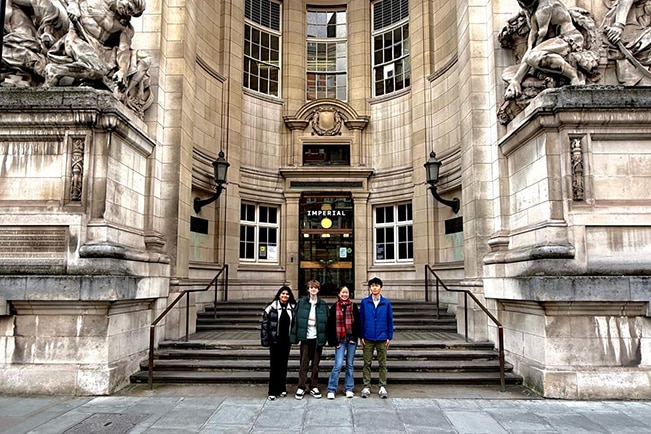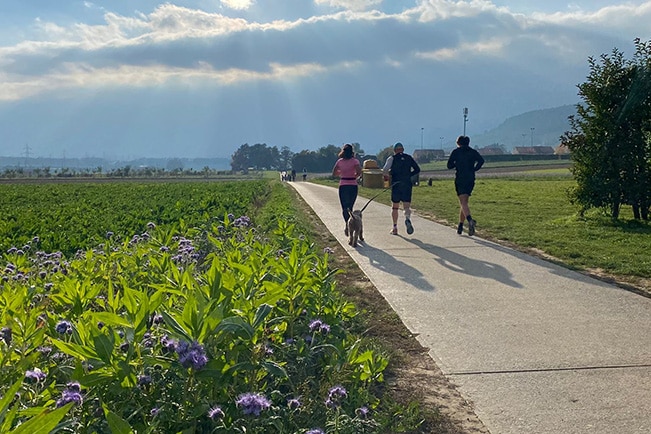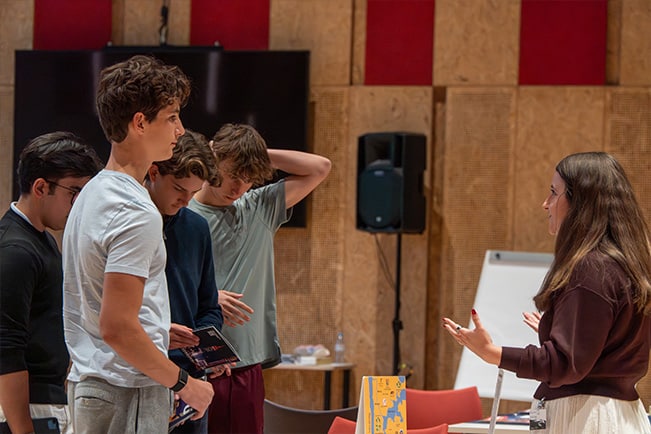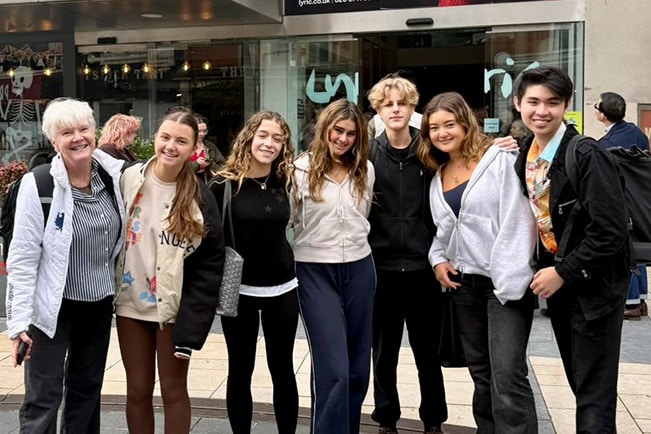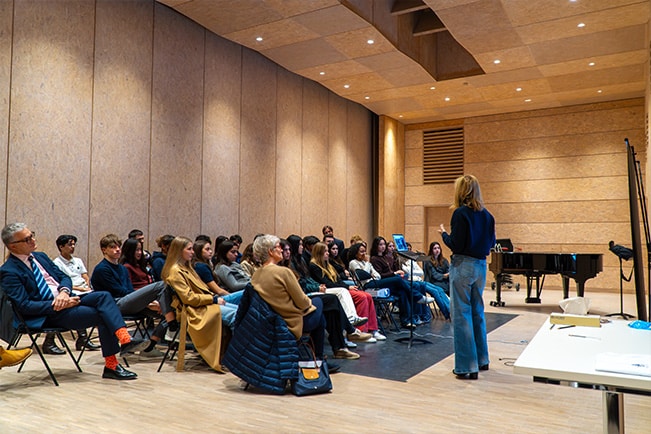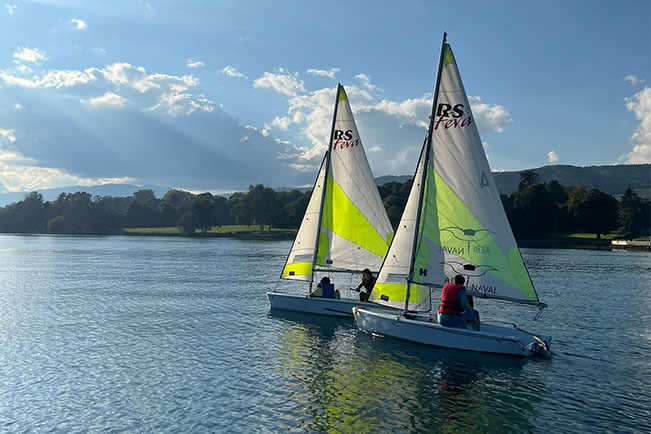在 Le Rosey, students recently engaged in an innovative physics activity that transformed abstract wave concepts into tangible, hands-on learning experiences. The "Building Wave Makers" project challenged Roséens to construct their own mechanical wave generators using surprisingly simple materials: wooden skewers, adhesive tape, and colorful gummy bears. This creative approach to studying wave mechanics allowed students to move beyond textbook diagrams and mathematical formulas, instead observing wave properties in real-time through physical models they built themselves. The activity began with teams of students carefully assembling their wave machines, strategically placing gummy bears along the skewers to create mass points that would oscillate when energy was introduced to the system. This practical construction phase required careful planning and precision, as the placement and spacing of components directly influenced the wave behavior they would later observe. The project exemplified Rosey's commitment to experiential learning, where theoretical concepts become concrete through direct manipulation and observation. As students worked collaboratively, they discussed how different construction choices might affect their wave patterns, demonstrating early critical thinking about the relationship between physical structure and wave dynamics. The use of everyday materials made the complex physics principles more accessible and memorable, creating a learning environment where abstract concepts became visible and measurable. This approach aligns with modern educational research showing that hands-on activities significantly improve retention and understanding of scientific principles, particularly in fields like physics where visualization can be challenging. The wave maker project at Le Rosey provided an excellent foundation for understanding how energy transfers through different media, setting the stage for deeper exploration of wave mechanics in subsequent lessons.
Once the wave makers were constructed, 罗西 students began their systematic investigation of wave properties, focusing specifically on three fundamental characteristics: amplitude, wavelength, and frequency. By gently introducing energy at one end of their skewer-based wave machines, students observed how the gummy bears began to oscillate, creating visible wave patterns that traveled along the length of their constructions. The amplitude—the maximum displacement from equilibrium—became immediately apparent as students noted how far the gummy bears moved from their resting positions during each oscillation cycle. Students experimented with different amounts of initial energy input, discovering how greater force resulted in larger amplitudes, directly demonstrating the relationship between energy and wave intensity. The wavelength measurement required careful observation as students tracked the distance between successive crests or troughs in their wave patterns, learning how this property relates to the speed of wave propagation through their medium. Perhaps most engaging was the investigation of frequency, as students timed how many complete oscillation cycles occurred per second, recognizing that this property determines the energy characteristics of the wave. Through systematic experimentation, Roséens discovered how changing one wave property inevitably affected others, gaining practical understanding of the interconnected nature of wave characteristics. The activity provided excellent preparation for more advanced physics concepts they will encounter in their academic journey at Le Rosey, including harmonic motion, resonance, and wave interference patterns. This hands-on approach to learning wave mechanics not only reinforced theoretical knowledge but also developed important scientific skills including careful observation, precise measurement, data recording, and collaborative problem-solving—all essential competencies for future scientific study and research.

